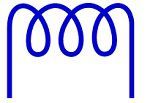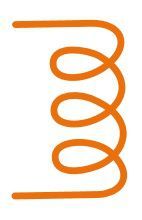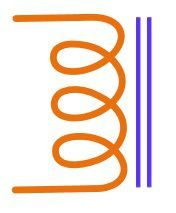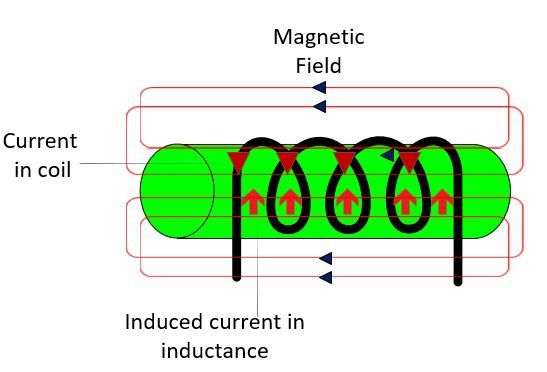What is Inductor and it's types
Definition: The inductor is a passive component which stores the electrical energy in the magnetic field when the electric current passes through it. Or we can say that the inductor is an electrical device which possesses the inductance.
The inductor is made of wire which has the property of inductance, i.e., opposes the flow of current. The inductance of wire increases by increasing the number of turns. The alphabet ‘L’ is used for representing the inductor, and it is measured in Henry. The inductance characterises the inductor. The figure below shows the symbolic representation of inductor.
The electric current I flows through the coil generates the magnetic field around it. Consider the magnetic field generates the flux Φ when current flows through it. The ratio of the flux and the current gives inductances.

The inductance of the circuit depends on the current paths and the magnetic permeability of the nearer material. The magnetic permeability shows the ability of the material to forms the magnetic field.
Types of Inductor
The inductors are classified into two types.
1. Air Cored Inductor (wound on non-ferrite material) – The inductor in which either the core is completely absent or ceramic material is used for making the core such type of inductor is known as the air-cored inductor.
The ceramic material has the very low thermal coefficient of expansion. The low thermal coefficient of expansion means the shape of material remains same even with the rise of temperature. The ceramic material has no magnetic properties. The permeability of the inductor remains same due to the ceramic material.
In air core-inductor, the only work of the core is to give the coil a particular shape. The air cored structure has many advantages like they reduce the core losses and increases the quality factor. The air cored inductor is used for high-frequency applications work where low inductance is required.
2. Iron Core Inductor (wound on ferrite core) – It is a fixed value inductor in which the iron core is kept between the coil. The iron-cored inductor is used in the filter circuit for smoothing out the ripple voltage, it is also used as a choke in fluorescent tube light, in industrial power supplies and inverter system etc.
How Inductor Works?
The inductor is an electrical device used for storing the electrical energy in the form of the magnetic field. It is constructed by wounding the wire on the core. The cores are made of ceramic material, iron or by the air. The core may be toroidal or E- shaped.
The coil-carrying the electric current induces the magnetic field around the conductor. The intensity of the magnetic field increases if the core is placed between the coil. The core provides the low reluctance path to the magnetic flux.
The magnetic field induces the EMF in the coil which causes the current. And according to Lenz’s law, the causes always oppose the effect. Here, the current is the causes, and it is induced because of the voltage. Thus, the EMF oppose the change of current that changes the magnetic field. The current which reduces because of the inductance is known as the inductive reactance. The inductive reactance increases with the increase of the number of turn of coils.




Comments
Post a Comment
Do not enter any spam link in the comment box.